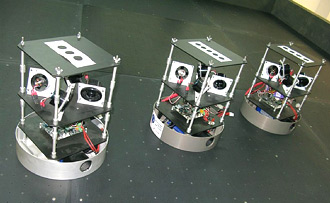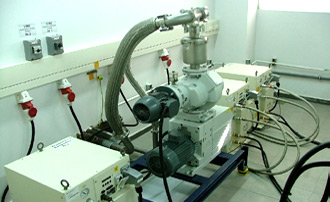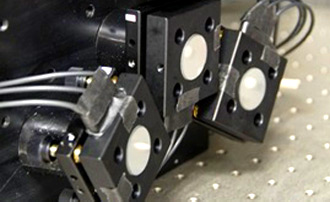
The Distributed Space Systems Laboratory (DSSL) was designed and built in the Faculty of Aerospace Engineering and is located in the Asher Space Research Institute. Research efforts are focused on dynamics and control of multiple spacecraft formation flying, a topic attracting much interest in the United States and in Europe. DSSL also serves as a resource for instruction and education.

The Electric Propulsion Laboratory (EPL) is located on the ground floor of the ASRI new building. The laboratory is divided into two halls, the Experimental and Machine halls.
The Laboratory is completed with the different diagnostics needed for the comprehensive experimental investigations of the Hall thrusters including cathodes compensators.

The Space Optics Laboratory is the second major laboratory located on ground floor of the ASRI building, immediately opposite the Electric Propulsion Laboratory. Interferometry seeks novel solutions for improving the angular resolution of telescopes for both astronomical and Earth observations from space. The resolution of a traditional telescopic imaging system is strictly limited by the size of the aperture and the colour of light that is observed. Telescopes as large as 30 and 50 meters are currently being designed, but in space limitations on size and weight are severe. The Hubble space telescope, for example, has a mirror diameter of 2.4 meters. In order to minimize aberrations, the mirror needs to be thick, which costs valuable space and more importantly weight that the mission needs to launch into space. Telescopes much larger than Hubble, therefore, very quickly become far too heavy and expensive for space missions.

The Aerospace Plasma Laboratory (APL) was founded in 2015 by Asst. Prof. Igal Kronhaus for carrying out a program of research and development of innovative miniaturized plasma devices for propulsion applications. APL is currently active in two areas of research:
– Electric rocket propulsion for nanosatellite applications
– Plasma actuators for aeronautical flow manipulation
The laboratory goal is to enable advanced understating of the plasma processes in these devices andenable their realization. The approach to research in APL involves a full set of activities: starting from a simplified physical-mathematical or phenomenological model, then development of a more realistic computer simulation and finally the design, implementation, and testing of a specific device.